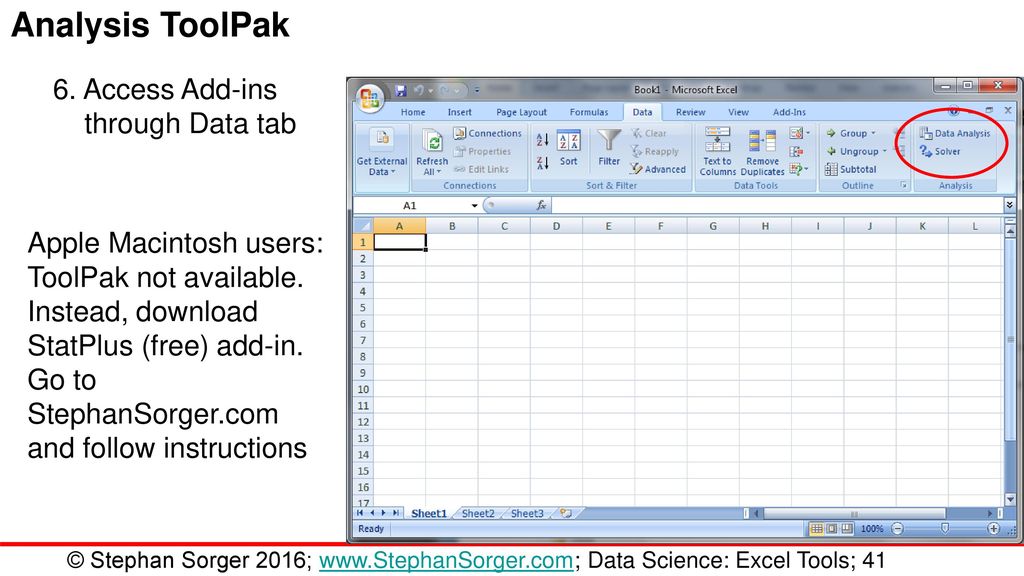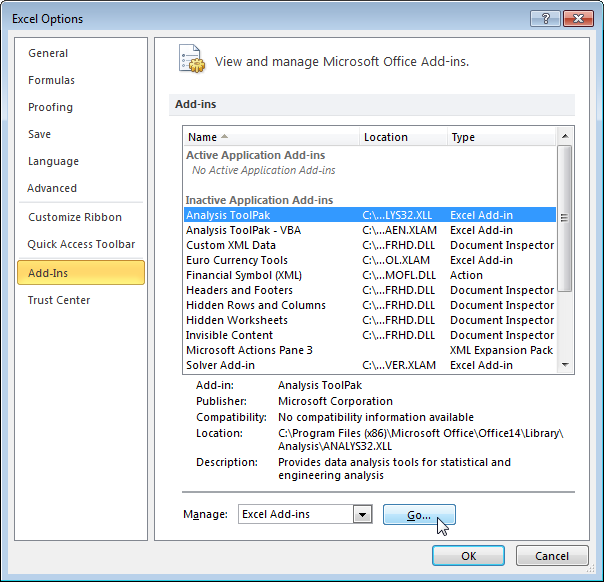

- #DOWNLOAD DATA ANALYSIS TOOLPAK FOR EXCEL MAC HOW TO#
- #DOWNLOAD DATA ANALYSIS TOOLPAK FOR EXCEL MAC SERIES#
The button will open the Data Analysis dialog, which offers access to a variety of analysis tools. Go back to the first screenshot in the instructions to see how it will look. Once the add in has been successfully installed you will see data analysis when you click on the data tab (usually to the far right of the toolbar). Where is the data analysis button in Excel? For example, select Histogram and click OK to create a Histogram in Excel. On the Data tab, in the Analysis group, you can now click on Data Analysis. Under Add-ins, select Analysis ToolPak and click on the Go button. In the Add-Ins box, check the Analysis ToolPak check box, and then click OK. If you're using Excel 2007, click the Microsoft Office Button, and then click Excel Options In the Manage box, select Excel Add-ins and then click Go. Load the Analysis ToolPak in Excel Click the File tab, click Options, and then click the Add-Ins category.
#DOWNLOAD DATA ANALYSIS TOOLPAK FOR EXCEL MAC HOW TO#
› Catholic Patron Saint Of Catholic Schoolsįrequently Asked Questions How to add the Analysis Toolpak in Excel ?.

#DOWNLOAD DATA ANALYSIS TOOLPAK FOR EXCEL MAC SERIES#
The Fourier Analysis tool breaks down a harmonic series into its most basic components using sinusoidal functions and analyzes the periodic data.Ĩ. This tool tests the null hypothesis that the samples from two distributions are equal variances.ħ. The Exponential Smoothing tool smooths time-series data through an exponential window function.Ħ.

This tool provides information and data about the central tendency and variability of your data.ĥ. Covariance is usually used in tandem with the correlation analysis tool especially when you have lots of different measurement variables on a set.Ĥ. The correlation analysis tool provides an output table and a matrix to know whether 2 variables tend to move together.ģ. There are 3 types of Anova: Single Factor.Ģ. ANOVA (Analysis of Variance) is a variance tool to develop and confirm an explanation for the observed data.


 0 kommentar(er)
0 kommentar(er)
